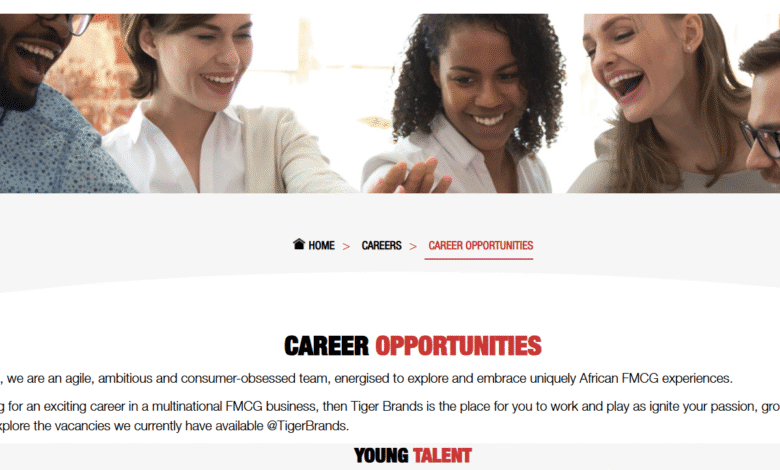Tiger Brand Development Programme 2025/2026: Strategic Roadmap for Sustainable Growth

Tiger Brands stands as a heavyweight in Africa’s fast-moving consumer goods (FMCG) industry. Its products touch millions of lives daily, from snacks to groceries. As the market shifts dramatically, the company’s upcoming development plan for 2025/2026 aims to keep it on top. This program focuses on innovation, expanding reach, caring for the planet, and running smoother operations. Let’s explore how Tiger Brands plans to thrive in a busy, changing world.
Context and Market Environment for 2025/2026
Market Trends Influencing Tiger Brand Strategies
Consumers are changing fast. Today, they want healthier options like organic snacks and functional foods that boost energy or immunity. The rise of online shopping is transforming how people buy FMCGs, with e-commerce channels booming across Africa. Meanwhile, economic ups and downs mean shoppers spend more carefully or look for better value for their money.
Competitive Landscape Analysis
Tiger Brand’s rivals aren’t sitting still. Companies like Nestlé, Unilever, and local brands are rolling out new products and investing heavily in marketing. Differentiation now means not just price but quality, innovation, and sustainability. This creates a real chance for Tiger to stand out by offering something unique and relevant to today’s consumers.
Regulatory and Policy Environment
Recent rules around packaging waste and product safety are shaping strategies. Countries are stricter on environmental practices and labeling. Companies that stay ahead of these laws avoid penalties and build trust. Future policies may push for more eco-friendly ingredients and packaging, making compliance essential.
Core Objectives of the Tiger Brand Development Programme 2025/2026
Sustained Market Leadership
Tiger aims to keep its dominant position in Africa’s FMCG space. That means growing market share and earning consumer trust through every product. Being relevant in consumers’ daily lives is key, so brand loyalty will be a top focus.
Innovation and Product Diversification
Rolling out new, trendy product lines is a must. Items like plant-based snacks, immunity boosters, or convenience foods should meet current trends. Using insights gathered from shoppers, Tiger will craft tailored offerings that hit the target spot.
Sustainability and Corporate Social Responsibility (CSR)
Environmental care is more than just a buzzword. Tiger is committed to sourcing ingredients responsibly and reducing waste. Community programs will support local farmers, improve access to education, and promote health. These efforts strengthen its long-term reputation and social impact.
Operational Excellence and Digital Transformation
Efficiency is the backbone of growth. The plan includes streamlining supply chains, upgrading factories, and adopting Industry 4.0 tools. This means smarter inventory management, faster manufacturing, and less waste—making business more profitable and responsible.
Strategic Initiatives and Implementation Plans
Product Innovation and Portfolio Expansion
New Product Development Strategies
Tiger will focus on healthy foods, organic options, and products with added benefits. For example, launching low-sugar cereals or snacks with added vitamins. Recent wins include launching gluten-free biscuits that gained quick popularity.
Portfolio Optimization
Losing focus on underperformers is part of the plan. Discontinuing weak-selling items will free resources for high-demand categories like beverages and chips. The goal is a smaller, smarter product lineup with better sales potential.
Market Penetration and Expansion
Targeting New Regions and Demographics
Both rural and urban markets are key. Rural areas offer growth through better supply chains, while younger consumers in cities crave trendy, affordable products. The rising middle class and youth segments are especially promising.
Strengthening Distribution Channels
Blending online shops with traditional stores creates a seamless shopping experience. Partnering with local distributors and big retailers boosts reach. Digital platforms enable personalized marketing that connects directly with customers.
Sustainability and CSR Programs
Environmental Sustainability Initiatives
- Reducing emissions, waste, and plastic use is a priority.
- Innovative packaging like biodegradable wraps is being tested.
- SUBMIT APPLICATIONS
- Recycling programs aim to cut down on landfill waste while maintaining product freshness.
Community Engagement and Social Development
Supporting local farmers creates a healthier supply chain and supports livelihoods. Programs like health screenings and education help elevate communities and ensure a social license to operate.
Digital Transformation and Innovation
Enhancing E-commerce Capabilities
Building a strong online presence and offering direct-to-consumer options make buying easier. Using data analytics, Tiger can better target marketing efforts, personalize offers, and improve customer service.
Implementation of Industry 4.0 Technologies
Automating factories, using real-time data trackers, and improving logistics create fast, flexible operations. These advancements cut costs and reduce delays, ensuring products always reach shelves on time.
Monitoring, Evaluation, and KPIs
Key Performance Indicators (KPIs)
Tracking market share, customer satisfaction, and sales growth helps measure progress. Sustainability metrics like waste reduction and carbon footprint are also central. Clear goals make adjustments easier and keep the company on track.
Feedback Loops and Continuous Improvement
Regular reviews with stakeholders and staff ensure the program stays relevant. Data-driven decisions help refine strategies, making sure every dollar spent counts. Flexibility remains key in a fast-paced market environment.
Conclusion
The Tiger Brand Development Programme 2025/2026 is a bold plan built on four pillars: innovation, market growth, sustainability, and operational efficiency. If executed well, it aims to solidify Tiger’s leadership while adapting to a changing market landscape. This strategy offers a roadmap for long-term success and resilient growth. Success depends on agility—staying flexible and open to new ideas will be the secret to thriving well beyond 2026.
Embrace change. Push boundaries. The future of Tiger Brands is brighter when innovation meets responsibility.





